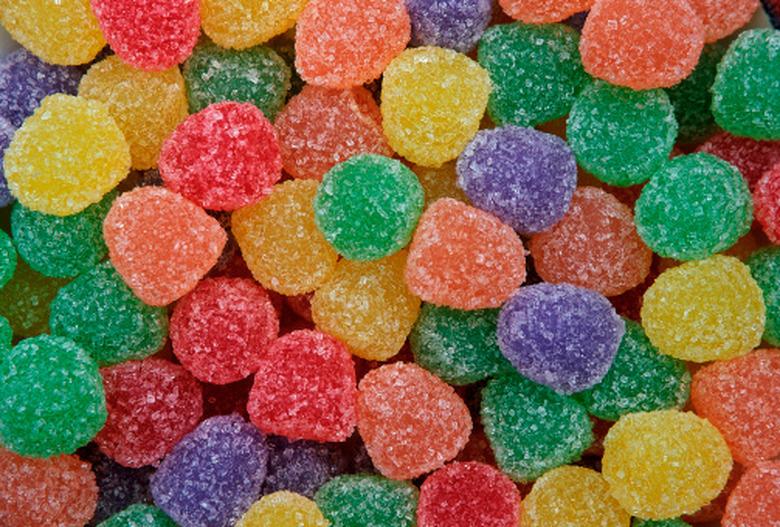Unique Ways To Build A DNA Model
A DNA model must consist of two distinct parts: the phosphate-sugar backbone and the nucleotide base pairs. The structure of DNA follows a few common rules. The nucleotides always pair with the same way, adenosine with thymine and guanine with cytosine. Sugars always connect to phosphates. Nucleotide pairs bond to the sugars on the phosphate-sugar backbone. Beyond that, the materials you use to construct the DNA model are only limited by your imagination.
The Key to a Great Model
The Key to a Great Model
Always write down what shape, color or object represents each part of the DNA molecule before you begin working. By creating a key, you will prevent confusion as you work and you can double-check your model once completed. Also, arranging the model on the work surface before you connect the pieces allows you to decide what pieces look and fit best together.
Hold That Thought
Hold That Thought
Many office supply and novelty stores offer paperclips in a variety of colors and shapes. You can create you phosphate/sugar ladders out of hearts and stars, use dogs and cats to represent the A-T base pairs, and musical notes and guitars to represent the G-C base pairs. Create themed DNA models. Use all neon colors or pastels. If you want a more flexible option, try sticky notes and double-sided tape. Get creative by using stickers to represent phosphate and hydrogen bonds.
Good Enough to Eat
Good Enough to Eat
Create a DNA model using your favorite breakfast cereal or chewy candy. Especially during candy-rich holidays like Halloween and Valentine's Day, a wide variety of shapes and colors become available. Gummy candies and chocolates combine easily with toothpicks. Cereals work best when strung on fishing line using a fine sewing needle. However, cereals are prone to crumbling, so you will need to be patient and work slowly. Add an extra element of fun by suspending the model between the empty cereal or candy boxes.
Designer DNA
Designer DNA
If you want a DNA model to keep and display, consider using plastic, glass, metal or gemstone beads. Bugle beads are long and thin and if used to represent the phosphate bonds, will create spacing between each base pair. By stringing these beads on jewelry wire, the model will support its own weight and hold its shape without affixing it to a base. This material will cost significantly more than other DNA model components, but if a part of your grade is dependent on visual aesthetics, this will produce a colorful and stunning effect.
Reality Meets Creativity
Reality Meets Creativity
In the DNA molecule, adenosine and guanine have similar chemical structures, and cytosine and thymine have similar chemical structures. If you want to build a DNA model that most closely resembles the real structures, you should use items to represent A and G that are different from items used for C and T. In addition, the A and G molecules are larger than the C and T molecules. For example, you could use shaped paperclips to represent A and G and small, colored, regular paperclips to represent C and T. Choose large, faceted beads to represent A and G and small smooth beads to represent C and T.
Cite This Article
MLA
Watson-Price, Erin. "Unique Ways To Build A DNA Model" sciencing.com, https://www.sciencing.com/unique-ways-build-dna-model-8486550/. 24 April 2017.
APA
Watson-Price, Erin. (2017, April 24). Unique Ways To Build A DNA Model. sciencing.com. Retrieved from https://www.sciencing.com/unique-ways-build-dna-model-8486550/
Chicago
Watson-Price, Erin. Unique Ways To Build A DNA Model last modified March 24, 2022. https://www.sciencing.com/unique-ways-build-dna-model-8486550/
